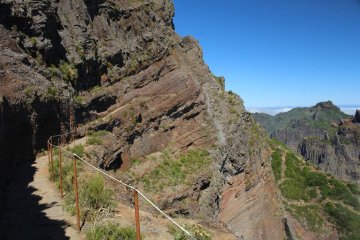In May 2019 we started our trip to Madeira intending to continue on to La Palma (Canaries) in late September.
The first thing to do was to go into Gibraltar itself and fill up with the really cheap diesel fuel there – 0.83€/litre instead of 1.24€/litre in the marina. It may not seem much but when you need 450 litres it makes a huge saving.
There were already several boats queuing for fuel but it didn’t take too long for us to be served.
After that we headed out in to the Straits surrounded by many other ships waiting to get fuel or be called in to load/unload their contents.
The Straits are a very busy place with ships entering and leaving the Mediterranean and, to ensure safety of everyone, are divided by a “Traffic Separation Zone” (TSZ). This is basically a lane in and a lane out, divided by a mile wide “no-go” area. It is marked on the sea charts used by ships, and by buoys along its length. Small craft (like “Maya”) must travel in the area between the coast and the edge of the separation zone, known as the “inshore zone”. The crew need to remain vigilant to ensure that the yacht doesn’t leave this inshore zone.
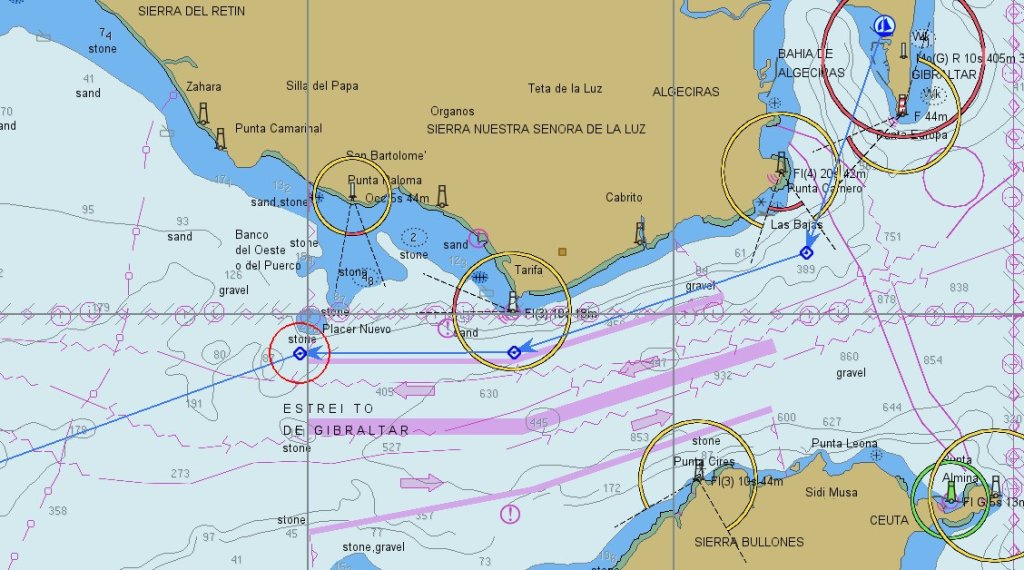
It is possible to cross the lanes used by ships but this must be done at 90 degrees to the shipping lane and as quickly as possible.
In reality the prospect of crossing these busy lanes is somewhat daunting, akin to crossing a busy motorway where the vehicles are much faster than you and unlikely to give way.
As the only wind was on the nose we motored to make the best of the tide and clear the Separation Zone as soon as possible. A few hours later the wind had dropped to virtually nothing and the surface of the sea was like oil with hardly a ripple. Is this really the Atlantic?
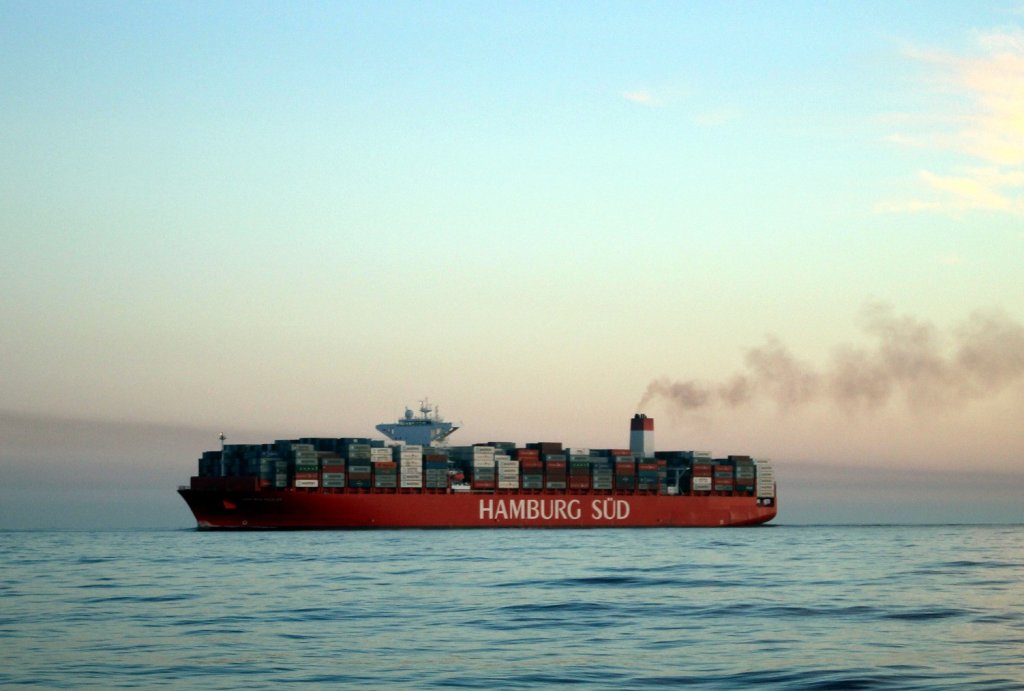
Our route was plotted in such a way that we didn’t need to cross the shipping lanes until we were past the end of the Separation Zone, and thus outside the rules. Care was obviously still needed as the ships are rather large and fast.
After the excitement of leaving Gibraltar and the Separation Zone having to motor was very disappointing . As darkness fell we were treated to a wonderful sunset and the prospect of encountering the next Separation Zone in the cover of darkness.
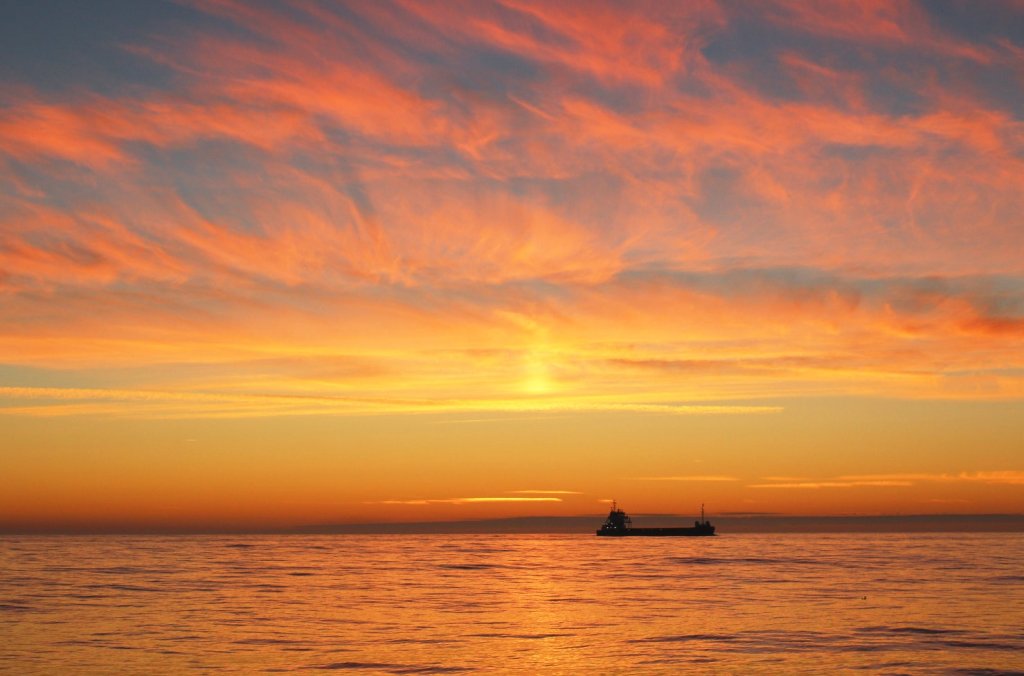
After sundown we approached the next TSZ (Traffic Separation Zone) in complete darkness. We weren’t worried as we could clearly see our position and the position of other large vessels on the chart plotter; what did worry me [as the skipper] was when the crew woke me up with something they’d seen. It was a line of twinkling coloured lights directly in front of the boat. A check with the radar showed many small targets coming and going (even with our super new radar, very small targets tend to do this).
Using our night binoculars, I identified this as a fishing net marked with a red flashing light at one end, several smaller white lights along its’ length and a final larger white flashing light at the other end. There was also a small fishing boat in attendance. We changed course to avoid this, which meant heading towards the edge of the TSZ.
No problem so far as the nearest ship wasn’t really that close. Then one of the crew saw another line of lights in the distance…then another…and another. They were all pretty much across our course and we had to continually turn towards the edge of the TSZ; turning away from the TSZ would have put us right amongst what now appeared to be a fairly sizeable fishing fleet.
We were now skirting the edge of the TSZ and some larger ships were joining the lane and turning to follow us at a higher speed. One in particular came within a quarter of a mile (VERY close) before turning in towards the fishing boats and blasting his horn continuously! He proceeded to carve straight through the fishing fleet to the echo of desperate calls and warnings on the VHF radio.
We doubt the ship ran over anyone, but we’re sure he must have destroyed at least some of the nets and frightened a lot of fishermen.
We found that if we came a little too close to a fishing boat, the fisherman would flash a bright light at us. If we flashed our spotlight back at him to say we’d seen him he would stop flashing his light at us and would give us a friendly wave as we passed, sometimes very close.
The night crew said the next morning that the fishing boats were tiny and generally open (no cabin). They were nearly 60 miles out from the coast and we have no idea how they got there or back.
The next morning the windless conditions continued, but eventually a very gentle breeze sprang up, enough to give us an extra knot of speed with the sails up.
The next day the wind changed direction and became more “useful”, but still very light. We opted to hoist the cruising chute (a larger and lighter sail) as there were plenty of able bodies on the boat. We have used this sail only a few times as it can be a bit of a handful, but many hands make light work and up it went. Actually, the first time we pulled it up by one of the corners by accident – it still worked, but didn’t look good so we did it again.
The next couple of days saw sailing and intermittent motoring until we spotted Porto Santo (island north of Madeira) and opted to just motor the remaining 7 miles or so to get there before dark.
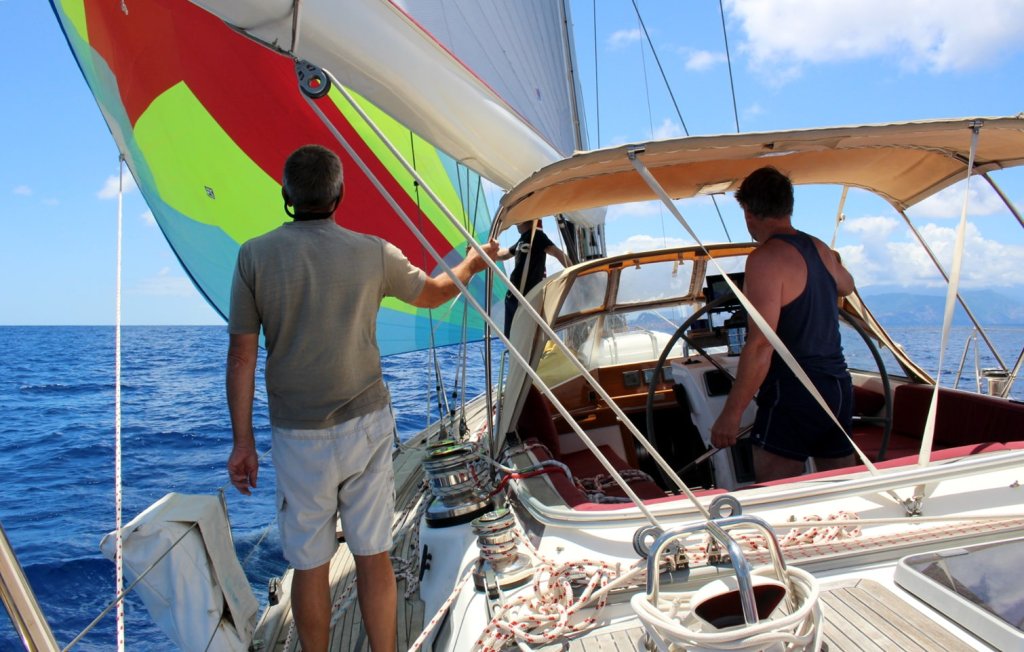
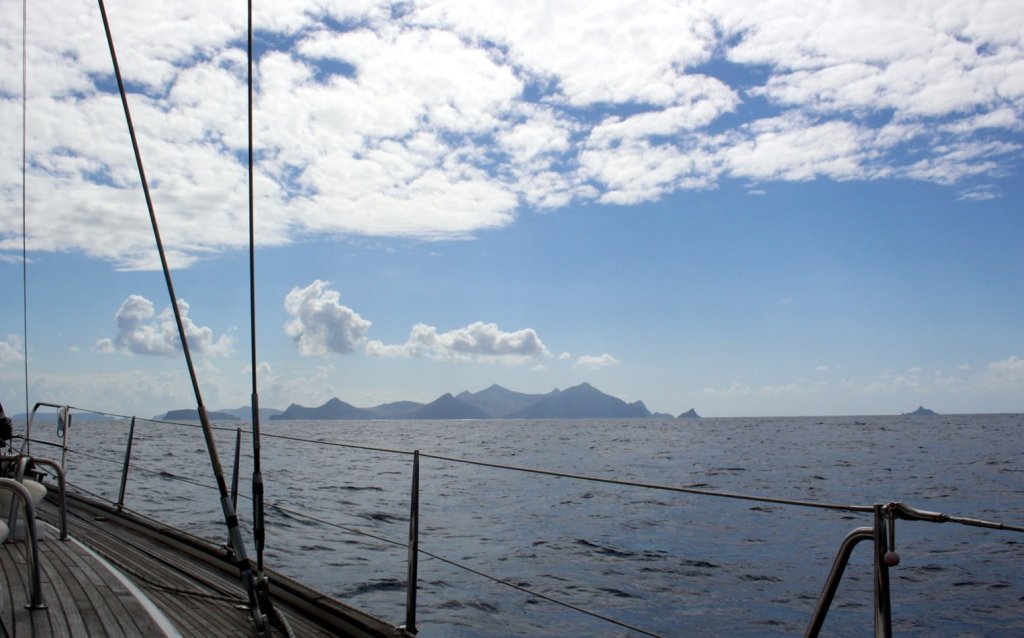
After anchoring safely in Porto Santo the crew enjoyed swimming and a well deserved G & T – a rule of the boat is no alchohol when at sea.
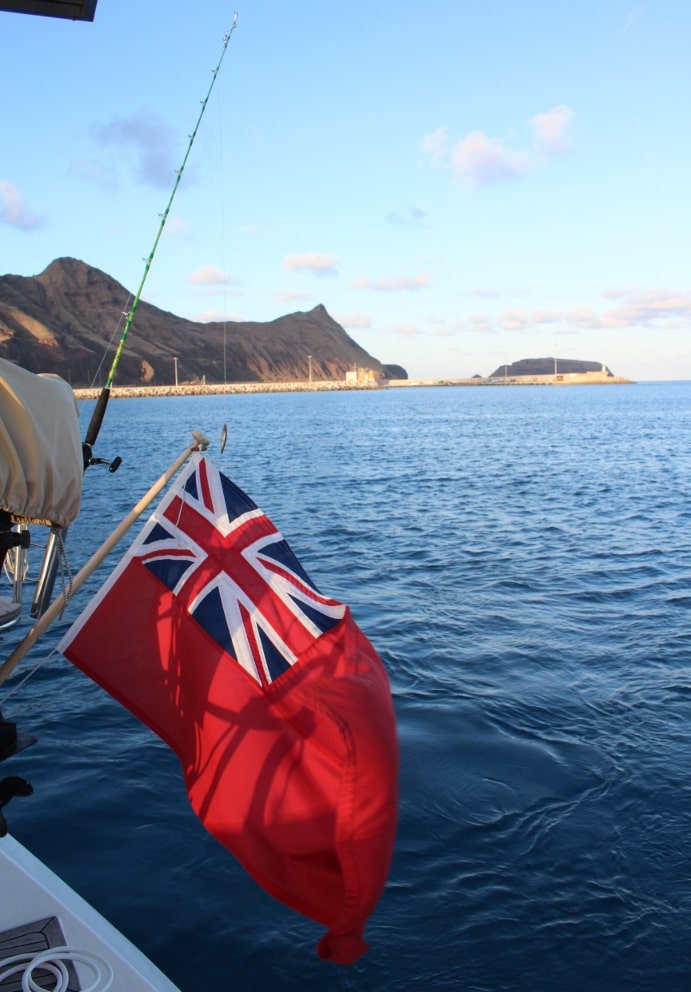
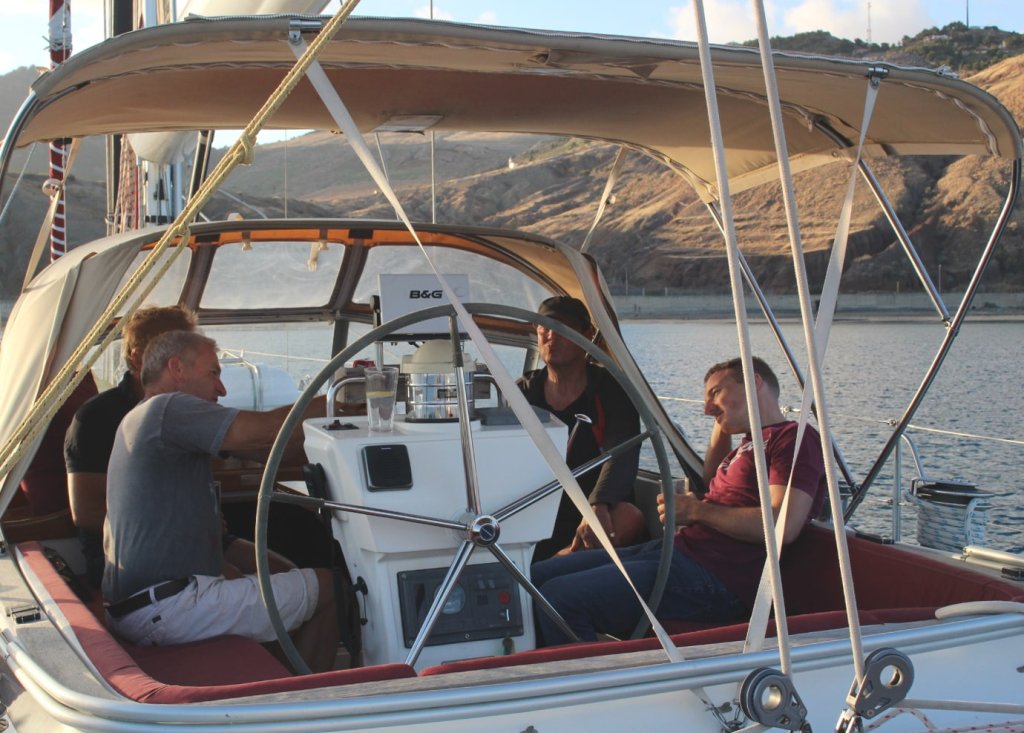
The next morning we set off for the short hop to Madeira and the marina at Quinta Do Lorde. Once again there was very light wind and so out came the cruising chute again.
It took just about 5 days to cover the 610 miles, so an average of 122 miles per day – not bad!

